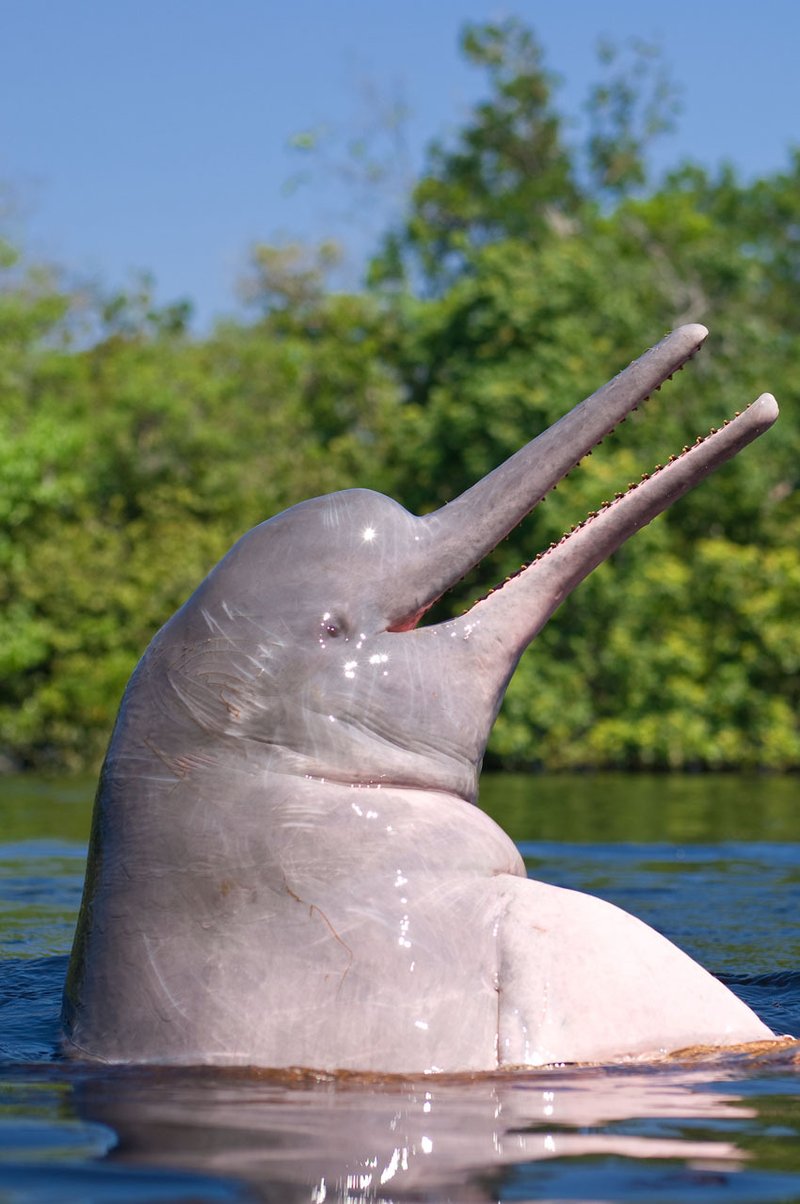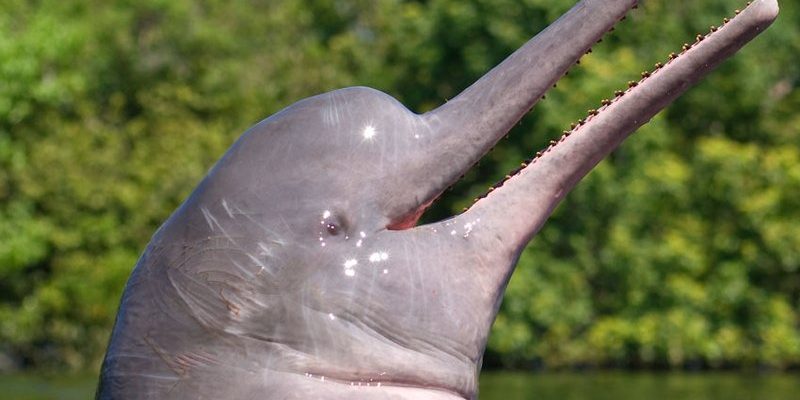
Imagine being in a huge, ever-changing maze without the benefit of clear sight. That’s how the Amazon river dolphin experiences its daily life. While they may not have the convenient clarity of ocean waters, these dolphins have adapted beautifully to their environment. They rely heavily on echolocation—a bit like a superhero radar—to find their way and communicate with one another. This ability is essential for their survival in the murky river waters, where visibility can drop to just a few feet.
In this article, we’ll explore how these intelligent creatures navigate their watery homes and chat with each other in ways that are as intriguing as they are vital for their existence. Let’s dive in!
The Role of Echolocation in Navigation
Echolocation is a remarkable skill that allows the Amazon river dolphin to “see” its surroundings by emitting sound waves. When these waves hit an object, they bounce back to the dolphin’s ears. It’s similar to how a bat navigates through dark caves; by listening to the echoes, the dolphin can determine the size, shape, and distance of objects in its environment.
How does echolocation work? First, the dolphin sends out a series of clicks, which are high-frequency sounds that travel well through water. When these clicks bounce back after hitting an object, they provide crucial information about that object’s location. This is especially important in the Amazon River, where plants and underwater structures can block a dolphin’s line of sight.
What’s truly amazing is how sensitive a dolphin’s hearing is. They can distinguish between different types of echoes and even identify various objects. It’s like they have an incredible mental map built from sound alone. This means that even in the muddy, often turbulent waters of the Amazon, the dolphin can navigate with remarkable precision.
Using Echolocation During Hunting
Echolocation isn’t just for navigation; it plays a vital role in hunting, too. The Amazon river dolphin often feeds on fish and crustaceans hiding in the dense river vegetation. By using echolocation, they can pinpoint where their prey is located, even if it’s well camouflaged.
Imagine trying to find your favorite snack in a dark room. You might bump into furniture or trip over toys. But if you could hear where the snack is just by making a sound, you’d succeed in no time! Similarly, the dolphin’s clicks help it locate and catch its meal quickly. By fine-tuning their echolocation clicks, they can even differentiate between the sounds of different species of fish. This ability gives them a significant advantage while hunting.
Communication Among Dolphins
While echolocation is primarily used for navigation, Amazon river dolphins also communicate with each other in complex ways. They have a wide range of vocalizations, including clicks, whistles, and even squeaks. Think of it as their own language, full of nuances and meanings.
What do these sounds mean? Dolphins use these sounds for various purposes—whether to signal danger, locate one another, or even express emotions. For instance, when a mother dolphin communicates with her calf, she may use softer clicks and whistles to convey safety and comfort. Meanwhile, if a dolphin is alarmed, its vocalizations become sharper and more urgent.
Interestingly, these sounds can travel long distances through water. Depending on the water temperature and depth, the dolphin’s calls can be heard by others several hundred meters away. Just like how you might shout to a friend across a busy park, these dolphins can effectively connect with each other even in a bustling river environment.
Social Interactions and Play
Beyond just practical communication, Amazon river dolphins engage in social interactions that are both fascinating and playful. They often swim in groups, and their vocalizations play a key role in maintaining those social bonds. For example, they might communicate during play, chasing each other around and leaping out of the water.
During these playful moments, their sounds can change to indicate excitement or joy. Watching a group of dolphins frolic together is not just a display of their social nature; it’s a showcase of their communication skills.
Their playful behavior isn’t just for fun—it also helps strengthen their social ties, which are essential for their survival. Strong social groups can provide protection and support when needed, making their interactions as crucial as their hunting skills.
Adapting to the Environment
The Amazon River presents challenges that other dolphins don’t face, like changing river currents and seasonal floods. These conditions require the river dolphin to adapt not only their navigation methods but also their communication strategies.
How do they adapt? For instance, during the rainy season, when the river swells and floods surrounding areas, the dolphins may change their echolocation patterns. They might use more frequent clicks or alter the pitch of their sounds to help navigate through the shifting waters. This adaptability showcases their intelligence and instinct to thrive in their unique environment.
Another adaptation is their ability to communicate more loudly when necessary. In areas where the water is flowing rapidly, the sounds can get lost in the current, so dolphins may amplify their calls to ensure they’re heard by others. It’s like raising your voice in a crowded, noisy café so a friend can hear you.
Conservation and Challenges
While the Amazon river dolphin is an incredible species, it faces numerous threats that impact its ability to navigate and communicate effectively. Habitat destruction, pollution, and fishing practices pose severe risks to their population. It’s heartbreaking to think that these intelligent creatures might struggle simply to survive.
What can we do to help? Supporting conservation efforts is a big step. Organizations working to protect the Amazon River and its wildlife are crucial. You can also contribute by spreading awareness about the challenges these dolphins face. Every little bit helps—whether it’s joining local clean-up efforts or educating others about the importance of preserving their habitat.
When we take steps to protect the Amazon River, we ensure that the river dolphins can continue to navigate and communicate in the ways that are so unique to them. Their existence enriches the ecosystem and reminds us of the beauty of nature’s wonders.
The Amazon river dolphin is a remarkable creature, beautifully adapted to its environment. From navigating through murky waters using echolocation to engaging in complex communication with their pods, these dolphins demonstrate intelligence and social behavior that’s fascinating to observe.
As we learn more about the ways these dolphins interact with their world, it’s essential to support their conservation. Protecting the Amazon River is not just about saving a species; it’s about preserving a rich ecosystem that plays a vital role in our planet’s health.
Let’s keep exploring and learning about these incredible creatures. The Amazon river dolphin deserves our admiration—and protection—for generations to come.

